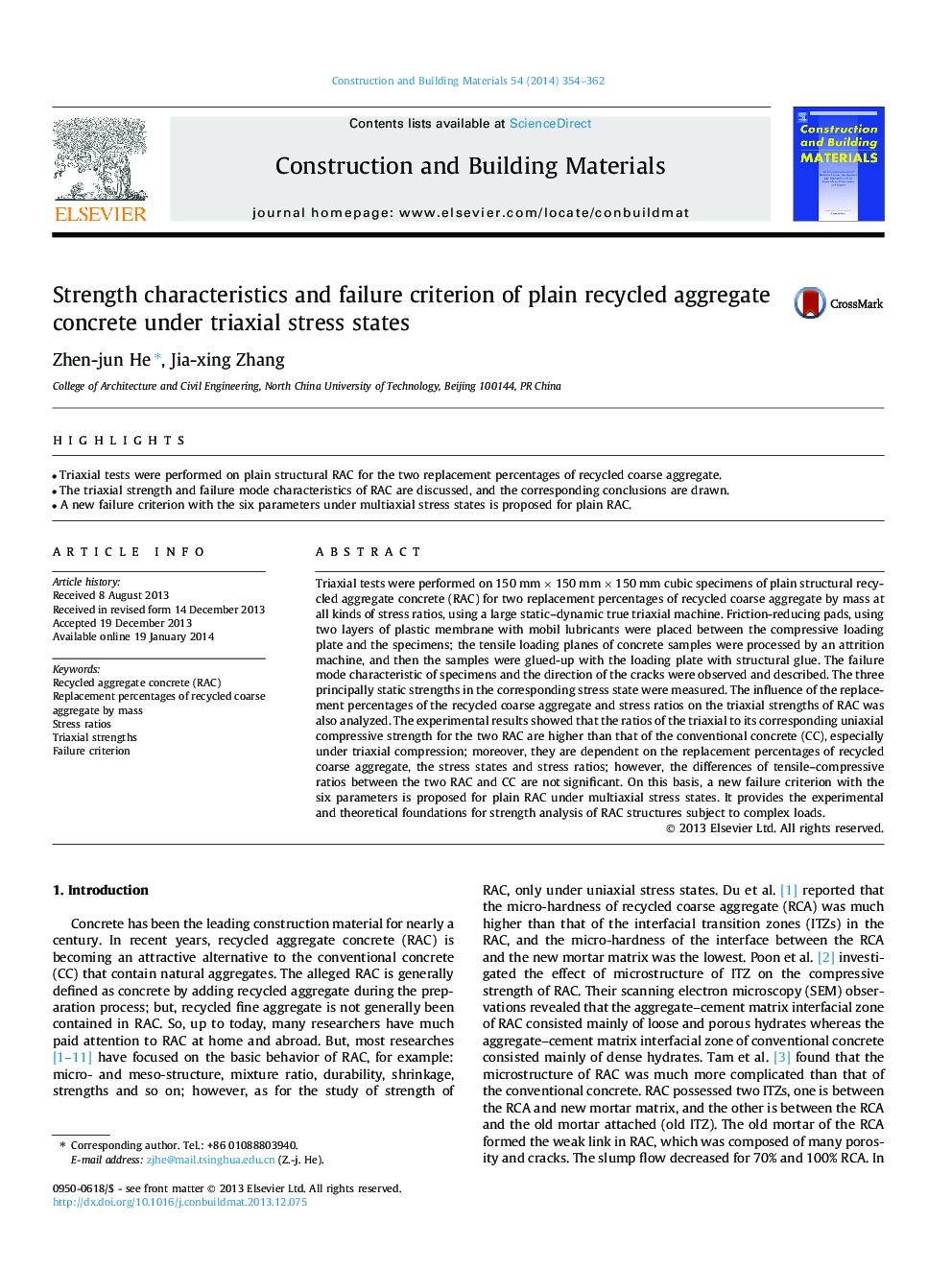| Article ID | Journal | Published Year | Pages | File Type |
|---|---|---|---|---|
| 6723832 | Construction and Building Materials | 2014 | 9 Pages |
Abstract
Triaxial tests were performed on 150 mm Ã 150 mm Ã 150 mm cubic specimens of plain structural recycled aggregate concrete (RAC) for two replacement percentages of recycled coarse aggregate by mass at all kinds of stress ratios, using a large static-dynamic true triaxial machine. Friction-reducing pads, using two layers of plastic membrane with mobil lubricants were placed between the compressive loading plate and the specimens; the tensile loading planes of concrete samples were processed by an attrition machine, and then the samples were glued-up with the loading plate with structural glue. The failure mode characteristic of specimens and the direction of the cracks were observed and described. The three principally static strengths in the corresponding stress state were measured. The influence of the replacement percentages of the recycled coarse aggregate and stress ratios on the triaxial strengths of RAC was also analyzed. The experimental results showed that the ratios of the triaxial to its corresponding uniaxial compressive strength for the two RAC are higher than that of the conventional concrete (CC), especially under triaxial compression; moreover, they are dependent on the replacement percentages of recycled coarse aggregate, the stress states and stress ratios; however, the differences of tensile-compressive ratios between the two RAC and CC are not significant. On this basis, a new failure criterion with the six parameters is proposed for plain RAC under multiaxial stress states. It provides the experimental and theoretical foundations for strength analysis of RAC structures subject to complex loads.
Related Topics
Physical Sciences and Engineering
Engineering
Civil and Structural Engineering
Authors
Zhen-jun He, Jia-xing Zhang,
